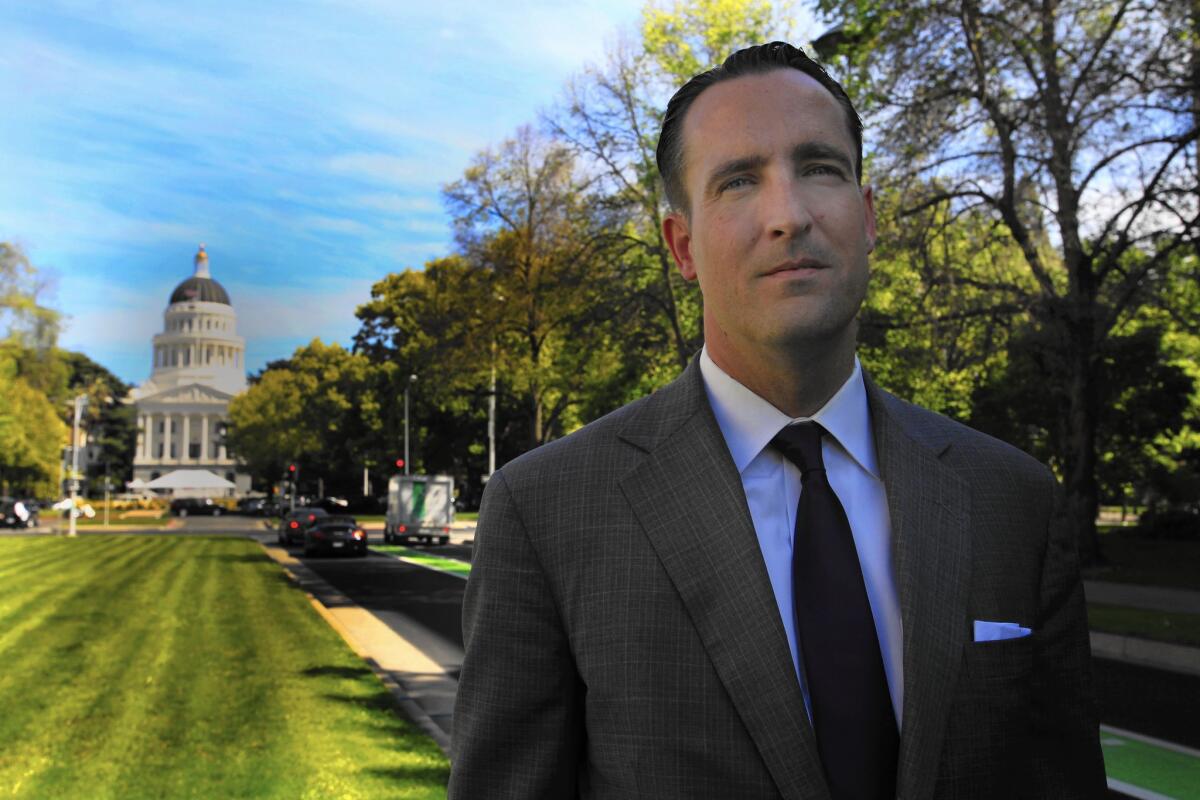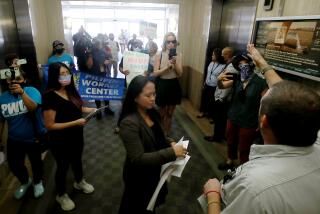California’s troubled jobless agency works out glitches

- Share via
SACRAMENTO — The state finally has stepped up its once-weak effort to get unemployment benefits more efficiently to nearly 3 million jobless Californians.
After several years of pitiful phone service, late payments, computer gaffes and bureaucratic delays, the state’s Employment Development Department — under new leadership — appears to be turning a corner in 2015.
Although challenges remain, EDD Director Patrick W. Henning Jr. sees progress since he took over late last March.
“Our systems are a lot more sound than they were a year ago,” he told The Times. “We’ve been able to not only shore up our computer system to reach stability but also to look to what the future holds for this department.”
After 18 months of complaining about the department, Zak Klein — who lost his job at a San Francisco nonprofit organization — sees improvement. At first, “everything, including the website, was dysfunctional,” he said. “I could not get through.”
Now it’s easier, he said. But what really got results was connecting with an EDD staffer in the San Francisco office, who intervened in his case. The EDD contends, however, that it lacks staffing to offer personal help to all applicants with complicated problems.
In Sacramento, a new phone network is closing in on a goal of handling 50,000 calls a week, giving dialers “a real good chance of being answered,” Henning said.
Meanwhile, he said, installation of the first phase of a “virtual hold” feature allows applicants to get a call back when a claims worker is free, instead of being put on hold for long stretches or getting abruptly disconnected.
After much effort, the EDD’s 3-decade-old computer is better synced with modern software, Henning said, though he concedes that the network needs manual workarounds when glitches occur.
Looking ahead, the director said he expected to launch an online unemployment insurance program that will allow people to access their files and recertify claims using home or public computers.
That should free up additional staff to answer calls from people with special problems, few or no computer skills or language difficulties. A mobile smartphone application could be ready later this year, Henning said.
Still not resolved are tens of thousands of applications for benefits of up to $450 a week that get rejected by EDD staffers, many for technical issues, and then end up in a lengthy appeals process.
Last year, nearly half the denials by EDD staffers were reversed by judges, a slight improvement from the previous year, according to statistics posted by the California Unemployment Insurance Appeals Board.
State auditors and the lawmaker who requested their audit, Assemblyman Henry T. Perea (D-Fresno), want the EDD to make a greater effort to contact applicants about paperwork problems before denying claims.
The EDD “is on the right track, but more needs to be done,” Perea said. “Increased opportunities should be given to claimants to clear up issues prior to going to the appeals process.”
Advocates for agricultural workers — who regularly file for unemployment benefits because of their seasonal jobs — are pleased with the recent EDD improvements.
The changes, so far, have “had a positive impact on our clients’ access,” said Cynthia Rice, director of litigation, advocacy and training for California Rural Legal Assistance. “But there continue to be issues.”
The EDD needs “to take advantage of the fact it has relatively low claims now to implement a systematic fix” to problems, such as the high rate of denied claims being reversed on appeal, Rice said. If not, “we will be in a terrible situation the next time there’s an economic downturn.”
Indeed, California’s unemployment rate, though still one of the highest in the nation, dropped to 7.2% in November from a high of 12.4% in 2010. And the total number of claims fell to 3.2 million in the first 11 months of 2014 compared with 5.1 million for the same period in 2013. EDD is due to announce December employment statistics Friday.
More personal attention could reduce difficulties stemming from language, paperwork and the phones that have plagued seasonal agricultural worker like Gaspar Bravo, 59, said his rural legal assistance attorney, Elena Dineen in Salinas.
Bravo sought her help in recovering missing benefits after being laid off from a packinghouse job in both of the last two years. Service was “bad, bad, completely bad,” he said in Spanish. “The truth is I don’t know what’s happening.”
Providing more face-to-face assistance in the EDD-affiliated one-stop job centers is key to helping applicants break through bureaucratic roadblocks and get their benefits, said Maurice Emsellem, co-policy director for the National Employment Law Project, which advocates for the jobless and working poor.
“The issue that is still out there is how friendly is the system to immigrant workers and other people who are not computer literate,” he said. “A large number of people have a hard time navigating online.”
Twitter: @MarcLifsher
More to Read
Inside the business of entertainment
The Wide Shot brings you news, analysis and insights on everything from streaming wars to production — and what it all means for the future.
You may occasionally receive promotional content from the Los Angeles Times.











